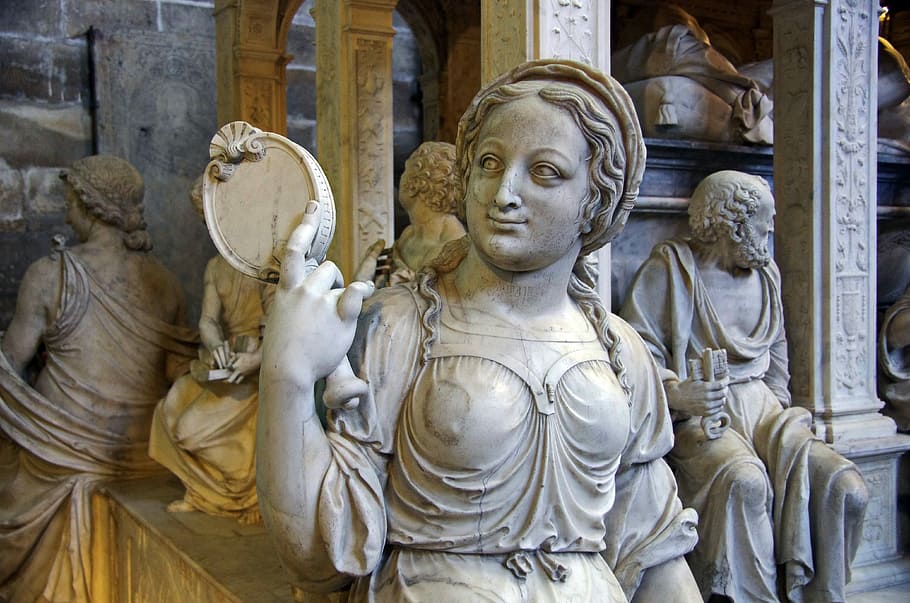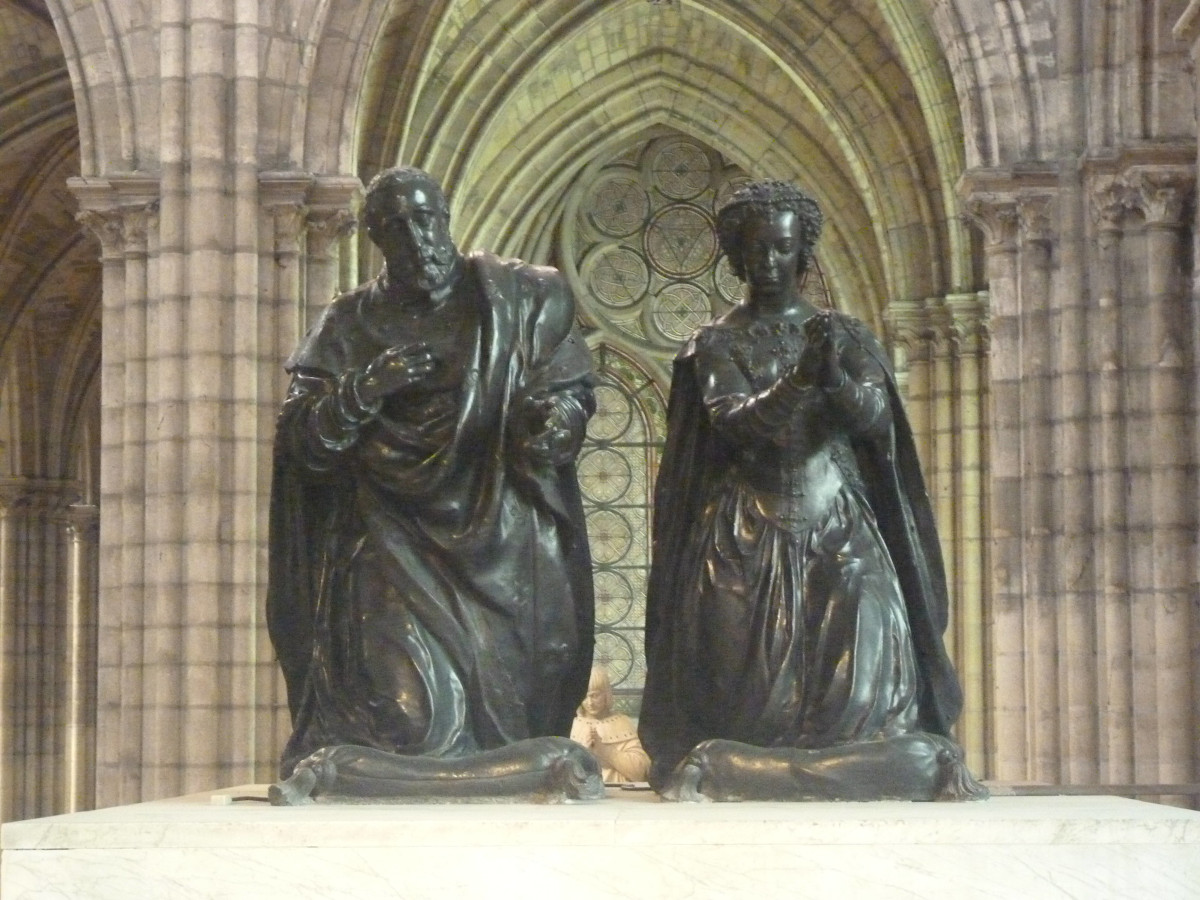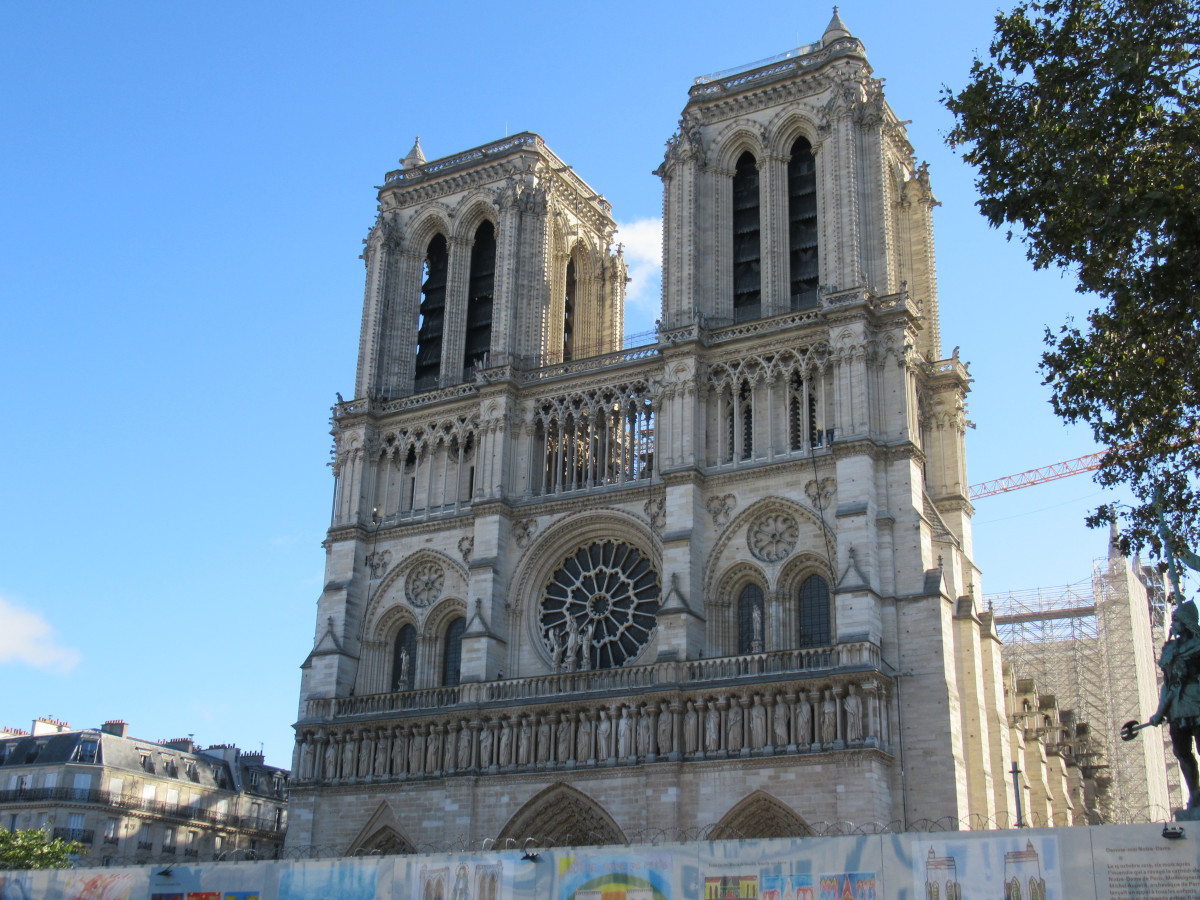Did you know that there are two Paris Cathedrals? Notre Dame symbolises Paris, especially since the devastating fire which nearly destroyed it, but there is another Paris cathedral, just as full of historical significance and just as beautiful. The Basilique St Denis is always worth a visit, but especially now that seeing inside Notre Dame is not an option until the repairs are finished, hopefully for the Paris Olympics in 2024.
The Basilique St Denis



Built a little earlier than Notre Dame, in 1137, the Basilique St Denis began with an unforgettable story, that of St Denis himself, executed as a Christian martyr in 250 AD at the ‘the mountain of martyrs’, known today as Montmartre. St Denis is said to have picked up his own head and carried it several miles to the place where he wished to be buried, and so the church built there in his memory was named after him.
Soon, most French kings and queens were buried there and if you visit today you will see about 70 of their tombs. The Basilique St Denis is a little out of the centre of Paris, but an easy two-minute walk from the metro station with the same name, the last stop but one at the northern end of Line 13.
Royal Tombs



As soon as you walk in, you will be struck by its medieval beauty: soaring arches and stained glass windows providing, as its 12 century builder Abbé Suger hoped it would, a sanctuary ‘pervaded by a wonderful and continuous light’. Wander its peaceful interior to see the tombs of long-dead kings with evocative names – Louis le Gros, Philippe le Hardi and poor little Jean le Posthume, born in 1316 after the death of his father Louis X, only to die himself 5 days later.
More famously, Henri II and his wife Catherine de Medici have a dramatic double tomb, with black marble statues showing them at prayer over a white marble tomb, depicting their corpses. Best-known are the life-size statues of Louis XVI and Marie Antoinette, installed here in the 19th century when the horror of their execution was fading. Nearby, set into a wall in the crypt, is the mummified heart of their ten year-old son, Louis-Charles.
Jousting and Pageants



Some of France’s key historical moments took place at St Denis. In the 14th century, Charles VI’s new knights were ‘dubbed’ here, followed by banqueting and a three day jousting tournament. Some kings were crowned here, others who were crowned at Reims made their triumphal entry into Paris from St Denis. In 1515, the flamboyant Francois I rode along in splendour, casting gold coins into the watching crowd and followed by a huge entourage of nobles, pages, musicians and 400 archers.
It was here too that Henri IV, a Huguenot, converted to Catholicism to make himself more acceptable as king, famously remarking that ‘Paris is worth a mass.’ It’s a wonder that the Basilique St Denis is not better-known, for to wander among the many royal tombs from so long ago is to walk through French history: Pépin le Bref, Philippe le Hardi, Berthe au grand pied and such romantically-named queens as Isabelle d’Aragon and Béatrice de Bourbon. Most unforgettable of all is the tiny marble effigy of Jean le Posthume, who died aged just 5 days old. Remember too that Saint-Denis is far less crowded than Notre Dame.
Notre Dame



In Notre Dame too, you are treading on multiple layers of history. At the posthumous retrial of Joan of Arc in 1455, her mother pleaded that the original guilty verdict was ‘perfidious, violent, iniquitous and without shadow of right’ and it was indeed declared ‘null, invalid, worthless.’ Napoleon arranged for his coronation to be held here, inviting the pope to do the honours, but then snubbed him at the last minute and placed the crown on his head himself. His mother, disliking her son’s mighty ambition, had declined to attend, but Napoleon made sure that the artist Jacques Louis David included her in his painting of the event.
A Te Deum was said at Notre Dame at the end of World War 1 in 1918, and in August 1944 General de Gaulle himself attended a service here to mark the liberation of Paris from German occupation. It was arranged so hastily that gunshots could still be heard in the streets outside. No wonder the Parisian authorities are so keen to have Notre Dame re-opened in time for the Olympics. It has been part of so many great events in the city.
Inside Notre Dame
When you can get back inside, things to look out for include the enormous rose windows which were saved from the fire and will be re-fitted. The one on the North Side, predominantly blue in colour, shows Mary, surrounded by figures from the Old Testament and is the original glass from the 13th century. The South Rose Window shows Christ himself, surrounded by the Apostles.
Other treasures which were saved from the fire and will be on display again include the cathedral’s collection of sacred relics, including the Crown of Thorns and a piece of the True Cross. As you leave the building, look out for the bronze star set into the pavement in the courtyard in front of the cathedral. It marks ‘kilometre zero,’ the spot from which the distance from anywhere in France to Paris is measured, more proof that Notre Dame is seen as the heart of Paris and of France itself.
Listen to the Podcast
suggested Reading
A Traveller’s History of Paris by Robert Cole
Paris, Biography of a City by Colin Jones
useful links
The Basilica of Saint-Denis
Notre Dame Cathedral
Previous Episode The Heart of Paris
Next Episode Versailles and the Court of Louis XIV
Last Updated on November 21, 2024 by Marian Jones





